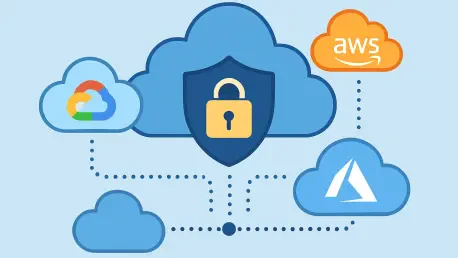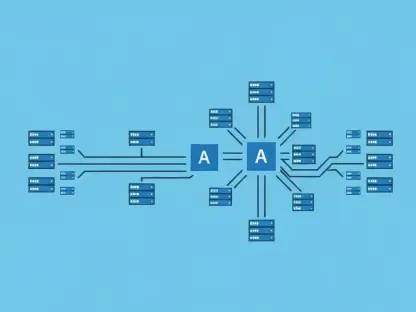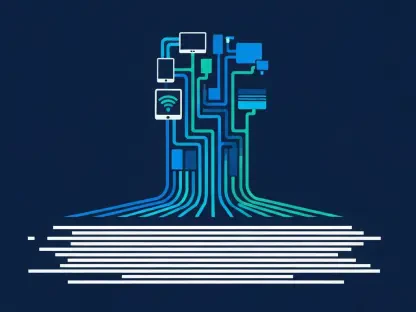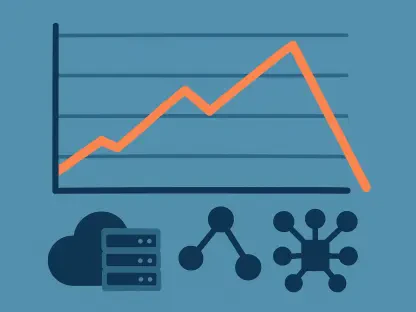In the rapidly evolving digital ecosystem, organizations are aggressively adopting cloud technologies to scale operations across hybrid, multi-cloud, and edge environments, but this expansion introduces significant security challenges that can no longer be ignored. As businesses leverage multiple cloud platforms to drive innovation and efficiency, they face an increasingly complex threat landscape marked by sophisticated cyberattacks, misconfigurations, and compliance risks. Traditional security approaches, often reactive and reliant on periodic audits, are proving inadequate for protecting these intricate systems where vulnerabilities can emerge at any stage. The concept of “shifting security left” offers a transformative solution by advocating for security to be integrated early in the development lifecycle, rather than being an afterthought addressed only after issues arise. This proactive mindset aims to catch potential threats before they escalate, embedding safeguards into the very foundation of software creation. Exploring how this approach can be practically implemented reveals a path to balancing speed with safety in today’s cloud-native world.
Integrating Security from the Start
The foundation of shifting security left lies in embedding protective measures at the earliest stages of the software development lifecycle (SDLC), a strategy that can significantly reduce vulnerabilities before they become exploitable. Threat modeling during the design phase stands as a critical first step, where teams proactively identify potential risks and misuse scenarios before any code is written. This isn’t a static process but a dynamic one, revisited whenever new features or data flows are introduced, ensuring that emerging threats are addressed in real time. By prioritizing security at this foundational level, organizations can make informed decisions that prevent costly rework later. DevSecOps practices further support this by weaving security into the fabric of development, using tools like static application security testing (SAST) to catch flaws early. Such integration not only minimizes risks but also builds a framework where security and development goals align seamlessly.
Beyond technical measures, cultivating a security-aware culture within development teams proves equally essential for sustaining early integration efforts in complex multi-cloud environments. Appointing security champions—developers with a deep understanding of secure coding practices—helps bridge the gap between engineering and dedicated security units, fostering collaboration and knowledge sharing. These champions encourage adherence to best practices while embedding automated tools like dynamic application security testing (DAST) and infrastructure-as-code (IaC) scanning into continuous integration/continuous delivery (CI/CD) pipelines. This automation ensures real-time vulnerability detection, drastically cutting down remediation times and enhancing trust in delivery processes. When teams view security as a shared responsibility from the outset, it transforms from a bottleneck into a driver of efficiency, enabling faster and safer deployments across diverse cloud platforms without sacrificing quality or innovation.
Adopting Zero Trust as a Core Principle
A pivotal strategy for securing multi-cloud environments involves adopting a zero trust architecture, which operates on the fundamental principle of “never trust, always verify,” ensuring no implicit trust is granted to any user or system. This model mandates rigorous identity verification and continuous risk-based access decisions for every workload, significantly reducing the potential for attackers to move laterally within networks. Techniques such as workload isolation and micro-segmentation create additional layers of defense by restricting access to the minimum necessary, thereby containing breaches even if they occur. In sprawling cloud setups, where resources span multiple providers and regions, zero trust provides a robust framework to safeguard sensitive data and applications. Implementing this approach requires a shift in mindset, prioritizing verification over convenience, but the payoff is a fortified posture against evolving threats.
Scaling zero trust across complex environments demands leveraging advanced tools like policy-as-code to enforce consistent security standards without manual oversight, a necessity in multi-cloud operations. By defining and storing security policies in version control systems and integrating them into CI/CD workflows, organizations can automatically prevent misconfigurations and ensure adherence to critical standards like encryption and role-based access control (RBAC). Complementing this, secure identity practices—such as using managed identities, secure vaults for secrets management, and just-in-time (JIT) access—eliminate the risks associated with hardcoded credentials while enforcing least privilege principles. These measures, when combined with IaC guardrails, ensure that infrastructure provisioning remains secure and uniform across platforms. The result is a resilient security model that not only protects against current threats but also adapts to the dynamic nature of cloud architectures.
Leveraging Automation for Risk Management
Automation stands as a critical enabler for managing security at scale in multi-cloud environments, where manual processes simply cannot keep pace with the volume and complexity of potential threats. Real-time monitoring platforms and custom observability layers provide comprehensive visibility into sprawling systems, aggregating data to detect misconfigurations and anomalies before they escalate into breaches. Automated alerts and dashboards empower teams to prioritize remediation efforts, focusing on the most critical issues without being overwhelmed by noise. Centralized logging further enhances this by ensuring traceability, which proves invaluable during incident response and compliance audits. By reducing human error and accelerating response times, automation transforms security from a reactive chore into a proactive, streamlined operation that supports business agility across diverse cloud landscapes.
Equally important is the role of automated policy enforcement and measurable metrics in maintaining a strong security posture amidst complex cloud operations. Tools that integrate policy-as-code with IaC ensure that security controls are applied consistently, regardless of environment or scale, preventing gaps that attackers could exploit. Metrics such as mean time to detect (MTTD) and cloud secure scores offer quantifiable insights into an organization’s security health, enabling leaders to track progress and identify areas needing improvement. These data-driven approaches not only support compliance with regulatory standards but also provide a clear picture of operational maturity. When automation is paired with actionable telemetry, it equips teams to address risks efficiently, ensuring that security keeps pace with rapid development cycles. This systematic focus on visibility and enforcement is indispensable for mitigating threats in an era of relentless digital expansion.
Fostering a Security-First Culture
Securing multi-cloud environments extends beyond technology to the human element, where building a collaborative, security-first culture across teams becomes a linchpin for sustainable defense. Distributing accountability among engineering, operations, governance, and leadership ensures that security isn’t siloed but embraced as a collective priority. Frameworks like responsible, accountable, consulted, and informed (RACI) mapping clarify roles, from policy creation to incident response, preventing oversight gaps. Training programs and hands-on labs further empower employees with the knowledge to identify and mitigate risks, embedding security fluency into daily workflows. When every level of an organization views protection as integral to their role, it creates a unified front against threats, turning potential weaknesses into strengths in the face of complex cloud challenges.
Leadership plays an equally vital role in driving this cultural transformation, ensuring that security aligns with broader business objectives rather than being perceived as a hindrance to progress. Sponsorship from executives provides the necessary resources and visibility to prioritize security initiatives, reinforcing its importance across departments. Encouraging cross-functional collaboration—between legal, privacy, compliance, and product teams—translates high-level policies into actionable practices tailored to specific needs. Security champions within teams act as connectors, facilitating communication and embedding best practices into development cycles. This holistic approach not only mitigates risks but also positions security as an enabler of innovation, allowing organizations to pursue ambitious cloud strategies with confidence. A shared commitment to vigilance fosters resilience, ensuring adaptability in an ever-shifting threat landscape.
Navigating Future Challenges with Strategic Balance
As cloud-native security continues to evolve, staying ahead of emerging trends and technologies remains critical for organizations aiming to protect complex multi-cloud environments without stifling growth. Artificial intelligence (AI)-powered tools are increasingly used for anomaly detection and predictive alerting, offering autonomous governance that anticipates threats before they strike. Software bill of materials (SBOM) scanning addresses supply chain vulnerabilities by identifying risks in third-party components pre-deployment. Meanwhile, zero trust principles are expanding to cover APIs, container workloads, and endpoints, adapting to new attack vectors. These advancements signal a proactive shift, but they also underscore the need for continuous adaptation to counter sophisticated threats like quantum-based cryptographic risks, ensuring defenses remain robust over time.
Balancing innovation with risk management presents an ongoing challenge, requiring strategic trade-offs to maintain both security and operational efficiency in multi-cloud setups. Decisions such as opting for private endpoints over public ones for better isolation often come with higher costs, demanding careful evaluation through risk-based frameworks. Security leaders must justify investments by aligning them with business priorities, ensuring that protective measures don’t impede agility. This delicate equilibrium involves not just adopting cutting-edge tools but also fostering a mindset of calculated risk-taking, where innovation is encouraged within secure boundaries. By prioritizing adaptability and strategic planning, organizations can navigate future uncertainties, integrating emerging solutions while maintaining a strong security posture that supports long-term scalability and resilience.
Reflecting on Transformative Security Steps
Looking back, the journey toward robust security in multi-cloud environments demanded a fundamental shift in approach, where proactive integration took precedence over reactive fixes. Organizations that embraced embedding security early in development cycles, championed zero trust principles, and harnessed automation for visibility and compliance saw a marked improvement in their resilience against threats. Collaborative cultures, supported by leadership and cross-team accountability, proved instrumental in turning security into a shared mission rather than a siloed burden. Reflecting on these efforts, the adoption of emerging tools like AI-driven detection and SBOM scanning highlighted a readiness to tackle future risks. Moving forward, the focus should remain on refining these strategies, continuously adapting to new challenges with a balanced perspective that prioritizes both innovation and protection, ensuring sustainable growth in an increasingly complex digital landscape.









